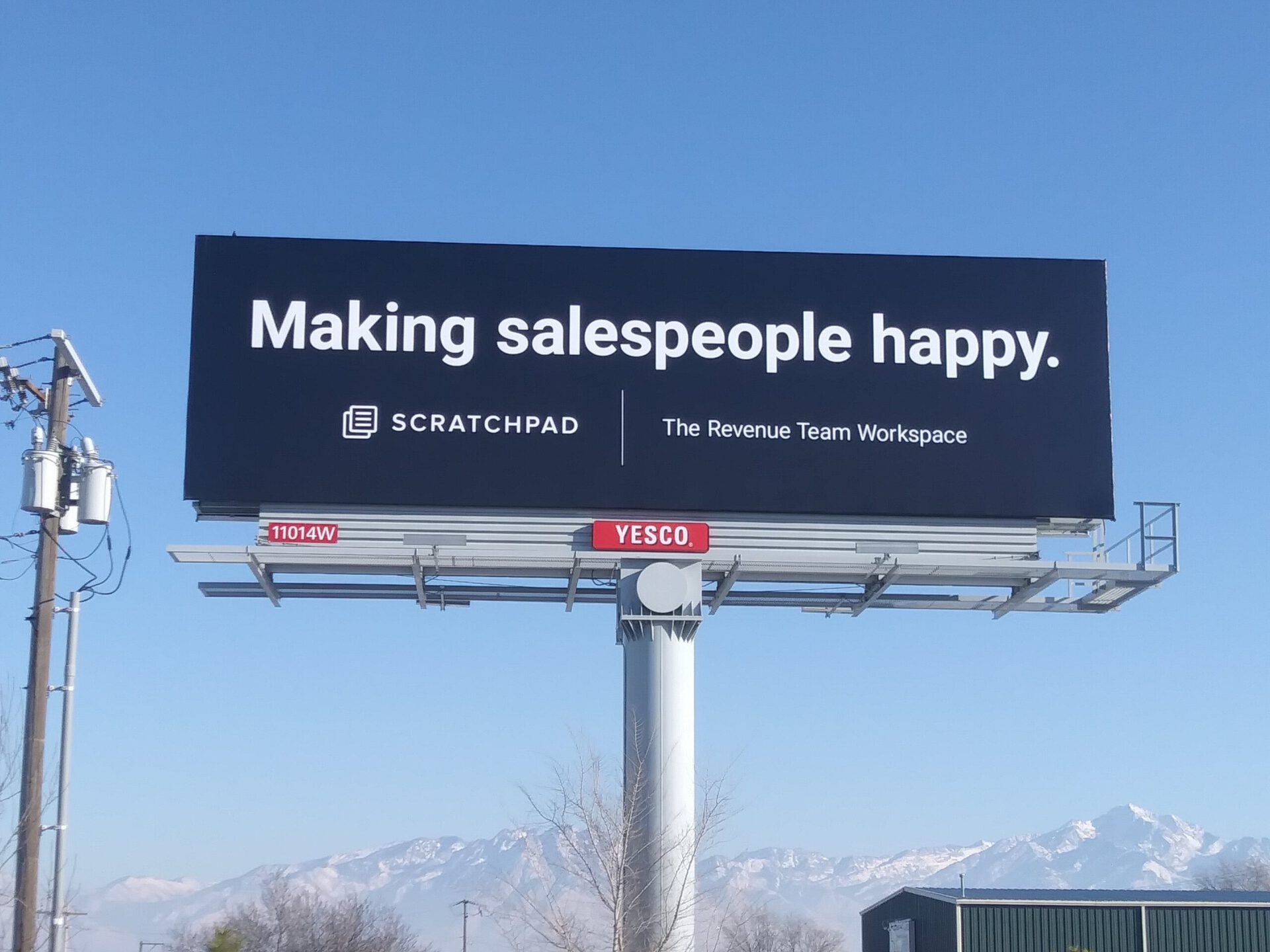Traditional print, 3D or digital, billboards are the Big Daddy of out of home advertising. But their larger-than-life size does not mean you can cram in more content to further your marketing goals. In fact, just the opposite is true: when it comes to roadside signage, less is more.
It’s easy to understand why when you consider how little time viewers have to interact with your message. Your billboard may be static, but they are moving right along the roadway — caught in traffic if you’re lucky but more likely zipping past at considerably higher speed. At just 30mph, your viewer has only 1.8 seconds to read text that is 8” high. Twice the speed, and the time drops in half to less than a second.
Less can deliver a lot
Clean, simple, bold design makes maximum impact. People will see your billboard. But will they get the message? Short, punchy content makes a lasting impression. Depending on your goal the right image (one that is easily recognizable) may carry the day without any text whatsoever.
Your goal is to lure the eyes and trigger the imagination. Here’s how.
Font
Billboards have a sort of visual Doppler effect – readability gets better as you get closer, then it’s gone. Larger font increases time to read and digest, and the faster traffic is moving the larger your font should be. Any font you use should be:
- Sans serif with strong lines, such as Tahoma, Verdana, Helvetica, Ariel, Garamond or Calibri
- Upper and lower case, not all caps
Using just one, or at the most two related fonts is more attractive and easier to read.
Size
For optimal viewing, a general rule of thumb is 1” of height (72 point) for every 10 feet of viewing distance. For digital signage you’ll want to think in terms of pixels and the spacing between them.
Color
Obviously you want to use your branded colors, but stick to one or two and make sure they contrast sharply to ensure easy reading at distance. Think black/white, not two pastels or two darks.
Clutter-free
Remember white space? It’s just as critical for OOH as it is for website and digital ad design because too much to look at is off-putting, not eye-catching. Try to leave about 40% of your space open so the rest of your design can stand out. The fewer words the better, so choose wisely. What is the one, concise takeaway you want to deliver?
Interestingly, abbreviations are harder to read than real words, unless they are universally understood and must-have relevant to your brand or message. Images should tell or support your billboard’s short “story,” not decorate it.
Contrast
With outdoor signage, clutter can encroach from the surroundings as well. Not the online kind where your digital ad is buried among other ads of who-knows-what derivation, but the environment itself. A gray sign on a concrete building will disappear, as will a blue board against a broad expanse of open blue sky. Again, it’s all about contrast. So consider lighting as well. Digital signs can fade out in bright sunlight, unlit print billboards go nowhere at night.
Personality
Every brand has one, and sometimes specific campaigns take on a life of their own. Ramp it up roadside, with content that entertains and you’ll make an even stronger emotional connection with viewers. Humor, whimsy and pathos all have a potentially valuable role here.
Call to action
Even if your goal is basic brand building, don’t waste the opportunity for viewers to engage with you. Invite them to do something – visit your store down the road, capture a QR code (best for slower traffic roadways), visit your website. What’s in it for them as a reward for noticing and paying attention to your roadside signage?
Here at OneScreen.ai, we have a lot to say about how billboards work and how to make them work for you (along with the entire panoply of OOH/DOOH inventory options). You can get more insights, tips and the latest industry news by subscribing to our blog. One click is all it takes.
